Which left-handed relievers should the Mets target in free agency?
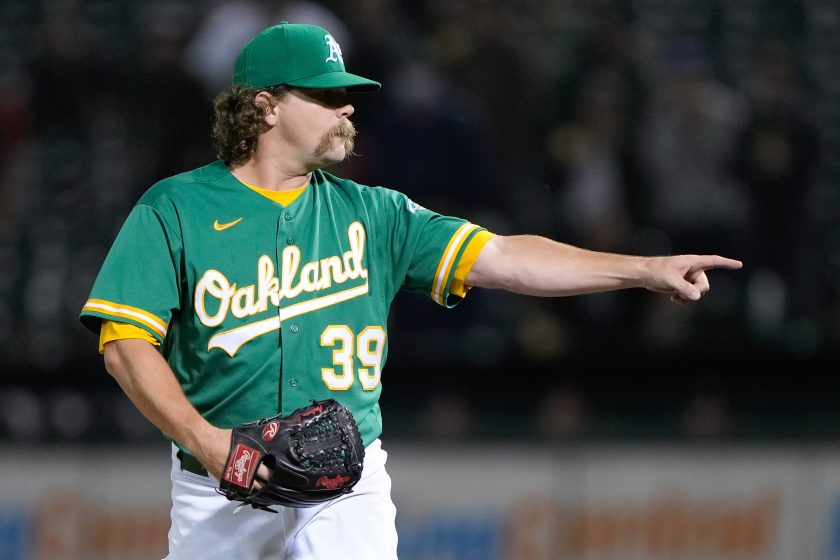
How can the Mets still improve their left-handed options in the pen in 2022?
Like the rest of Major League Baseball, the New York Mets sit idle. However, the roster newly appointed general manager Billy Eppler and team were in the middle of re-shaping and rebuilding still far from perfect.
One of the areas left to address? One of the most important aspects of a successful baseball team: the bullpen.
Current Landscape of the Bullpen
As it currently stands the Mets have the following relievers on the team’s 40-man roster:
- Miguel Castro (RHP)
- Yennsy Díaz (RHP)
- Edwin Díaz (RHP)
- Seth Lugo (RHP)
- Trevor May (RHP)
- Jake Reed (RHP)
- Sean Reid-Foley (RHP)
- Drew Smith (RHP)
Teams usually carry around seven-to-eight relievers. However, it is very unlikely all eight of the above fill these slots.
So, which of the above are “safe bets” to headline the opening day roster? They appear as follows: Castro (RHP), E. Díaz (RHP), Lugo (RHP), May (RHP), and Smith (RHP). Notice a common theme among these pitchers? They are all right-handed. Well, what are the Mets left-handed options?
The Options
Given the Mets’ current makeup of their bullpen, as mentioned above, they would be wise to at least add one left-handed reliever.
Former Met Aaron Loup filled this role so well last year, but got rewarded by the Los Angeles Angels with a large, two-year, $17,000,000 contract. With Loup, and some other notable left-handed relievers off the market, whose left?
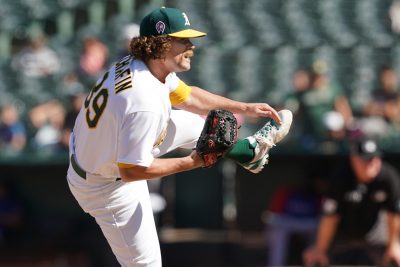
Andrew Chafin
Chafin is by far the best remaining left-handed reliever available and one of the best remaining relief pitchers overall. He was lights out last year for Chicago and Oakland, as he pitched to a total ERA of 1.83, a FIP of 2.98, and an xERA of 3.01. His BAA specifically against left-handed batters was a spectacular .170. These sparkling numbers came across 68.2 innings where he only walked 19 batters.
The 31-year old, per Baseball Savant, ranked above the league’s 80th percentile in Hard Hit %, xwOBA (expected weight on-base average), xBA, xSLG, and Chase Rate. Chafin, a relatively soft-tosser, was relying on his trio of pitches – sinker (xBA of .270), four-seamer (xBA of .226), and a lethal slider (xBA of .106). He used these to get the batters to chase and when they did make contact, it was usually soft.
Worth noting, Chafin did see a decrease in velocity after being dealt to Oakland where his numbers did falter a tad. Additionally, the 1.18 point difference in actual and expected ERA indicates some possible good luck in the outcomes Chafin was experiencing.
Nonetheless, he was one of the league’s best left-handed bullpen arms last year and will most likely multi-year deal (most likely two-years) worth $5,000,000 to $6,000,000. He will be a welcomed addition to any team’s bullpen.
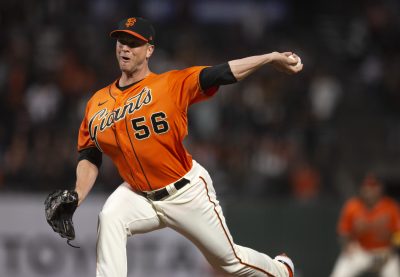
Tony Watson
The 11-year veteran is on the open market as a 37-year old. He appeared in 62 games last season, throwing 57.1 innings between his time the Los Angeles Angels and the San Francisco Giants. During these outings, he pitched to a 3.92 ERA, 3.48 FIP, and 3.37 xERA.
His splits between his team with Los Angeles and San Francisco were pretty extreme as his FIP changed by 1.47 points for the better with the Giants. So, he ended the season very strong before a shoulder injury cut his season a week or so short.
Watson, who mixes his four solid pitches – changeup (thrown 33.3% of the time last year), four-seam fastball (thrown 25.2% of the time last year), slider (thrown 24.1% of the time last year), and sinker (thrown 17.4% of the time last year) – thrived at inducing soft contact and getting hitters to chase.
Per Baseball Savant, he ranked in the league’s 93rd percentile in terms of average exit velocity and the league’s 95th percentile in Hard Hit %. His chase rate was in the league’s 89th percentile. Worth noting as well, his stuff was effective not only against left-handed hitters, but also against righties as well. He pitched to a BAA of .192 against both lefties and righties last year.
Watson is certainly not the flashiest name on the market. However, he has been a model of consistency throughout his career – only one season with an xERA above 4.00. Additionally, he will most likely come at a cheaper price-tag, on a one-year deal. This would allow the Mets to continue to plug holes.
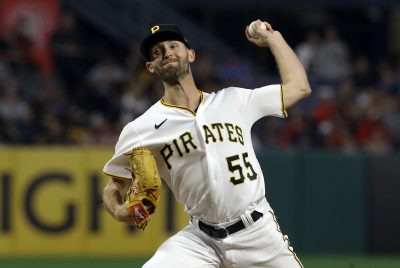
Chasen Shreve
Shreve turned in a pleasantly surprising 2020-21 season before being surprisingly non-tendered by the Mets. He landed with the rebuilding Pittsburgh Pirates and had arguably a season just as strong. In 56.1 innings, he pitched to a 3.20 ERA and a career-high ERA+ of 132. For reference, this mark would have ranked fifth among all Mets’ pitchers last season (minimum 40 innings pitched).
Shreve limited hard contact to great success last year and also got opposing hitters to chase his pitches. Per Baseball Savant, his Hard Hit % ranked in the league’s 94th percentile while his chase rate was in the league’s 74th percentile. This combination resulted in an xBA of only .215 last year which was top-third in the league.
Shreve did have the same issue he had in his time with the Mets, his walk rate was pretty high (11.9%). He also did not strike out batters at the clip he did with New York, and posted his lowest strikeout rate of his career. Nonetheless, Shreve would be the definition of a value signing. He would most likely cost little to nothing, and for a guy who has pitched to an xERA below four in five of his seven MLB seasons, that would be good value.
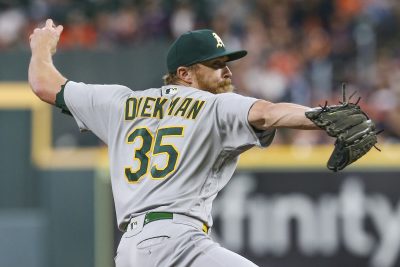
Jake Diekman
Diekman had a year to remember during the COVID-19 shortened 2020-21 season, pitching to an absurd 0.42 ERA in 21.1 innings. He followed it up this past season with a year nowhere as spectacular but still decent.
During the 2021-22 campaign, he threw 60.2 innings and pitched to an ERA of 3.86. Across these appearances, he struck out a whopping 83 batters (ranked in the league’s 92nd percentile). However, he also walked 34 (ranked in the league’s seventh percentile).
A large reason for Diekman’s 31.7% strikeout rate was his ability to get opposing batters to whiff on his pitches. His whiff rate ranked in the league’s 96th percentile. This largely due to his slider and changeup. Those pitches had whiff rates of 47% and 50%, respectively. Each sparkling figures.
Although there was good, there was certainly some bad as well. Diekman struggled with limiting hard contact and his walk rate was woeful at 13%. He wasn’t getting hit off of much, as his .219 xBA indicates. However, when he did it was usually for extra bases due to the hard contact.
Diekman should come at a favorable price tag. Given he is 35-years of age, any deal would most likely only be a one-year deal. Signing Diekman would be a high-upside move, with relatively low-risk given the likely cheaper price-tag. If he tones back the hard contact issues, as he did during his magical 2020-21 season, signing him could turn into a steal.

Other Options
There are certainly other options as well. However, the remaining all have some type of red flag. Brad Hand pitched okay with the Mets, specifically to a 3.40 FIP, but had a severely below-average season overall.
Andrew Miller (37-years old and 4.50 FIP last season) has most likely seen the better days of his career come to an end. Sean Doolittle had a decent season with Cincinnati and Seattle, but is experiencing a steep decline.
Lefties such as Daniel Norris, Adam Morgan, and Buck Farmer are also available but have posted very poor numbers as of late.
- DRAFTKINGS SPORTSBOOK
BET $5 & GET $150 IN BONUS BETS INSTANTLY!
- FANDUEL SPORTSBOOK
BET $5, GET $150 BONUS!
- CAESARS SPORTSBOOK
$1,000 BET ON CAESARS!
- BETMGM SPORTSBOOK
BET $5, GET $158 BONUS!
- BET365
GET $150 BONUS OR $2,000 FIRST-BET SAFETY NET!











